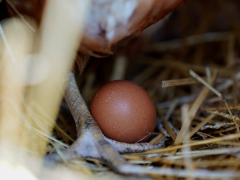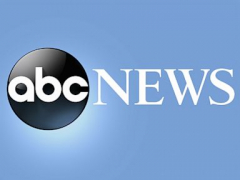President Donald Trump promised to lower prices for groceries, including eggs. But one crack in his plan is that egg prices haven’t fallen since he took office on January 20.
White House press secretary Karoline Leavitt, in her first on-camera news briefing on January 28, blamed that on former President Joe Biden’s “inflationary policies”.
Leavitt said the Biden administration and the US Agriculture Department “directed the mass killing of more than 100 million chickens, which has led to a lack of chicken supply in this country, therefore a lack of egg supply, which is leading to the shortage”.
Leavitt’s statement is partially accurate about the culling of millions of chickens, but she omitted important details and context about why that happened.
First, the chickens were killed to prevent the spread of the highly pathogenic avian influenza, or bird flu.
Second, it’s been longstanding USDA policy to cull an entire flock of birds once bird flu has been detected, including during Trump’s first administration.
White House deputy press secretary Anna Kelly referred PolitiFact back to Leavitt’s news briefing comments.
Egg prices rose under Biden – from $1.60 per dozen in February 2021 to $4.10 in December 2024 (his first and last full months in office), Bureau of Labor Statistics data shows. The Agriculture Department’s January food price outlook said egg prices could rise about 20 percent more this year.
A spokesperson for Expana, a company that tracks consumer prices, told news outlet Axios that a dozen large eggs costs more than $7 in some US regions.
Since February 8, 2022, when the virus was detected in a commercial flock, more than 147 million birds, including chickens, turkeys, ducks and geese, have died, the USDA said.
USDA data shows 108 million egg-laying chickens died since 2022, including 13 million in 2025. It’s not clear how many were euthanised or died of the virus.
As of January 29, bird flu has also been detected in dairy cattle, affecting 944 herds in 16 states, US Centers for Disease Control and Prevention data shows. Humans have also tested positive for the virus – 67 confirmed cases have been reported in the US and one person has died, the CDC said.
Why are flocks culled?
Experts told PolitiFact the birds are culled to stop the virus from spreading. This protects not only nearby farms and the poultry industry, but public health. A 2002 federal law, the Animal Health Protection Act, gives the USDA’s Animal and Plant Health Inspection Service authority to depopulate herds and flocks to stop the disease’s spread.
“If the birds are dead, the virus dies along with them,” Russ Daly, a veterinarian for the South Dakota Department of Health and a South Dakota State University professor, said.
Chickens that contract the bird flu virus have little chance of survival; 90 percent to 100 percent percent of them die, usually within 48 hours, the CDC said.
Waiting for the chickens to





